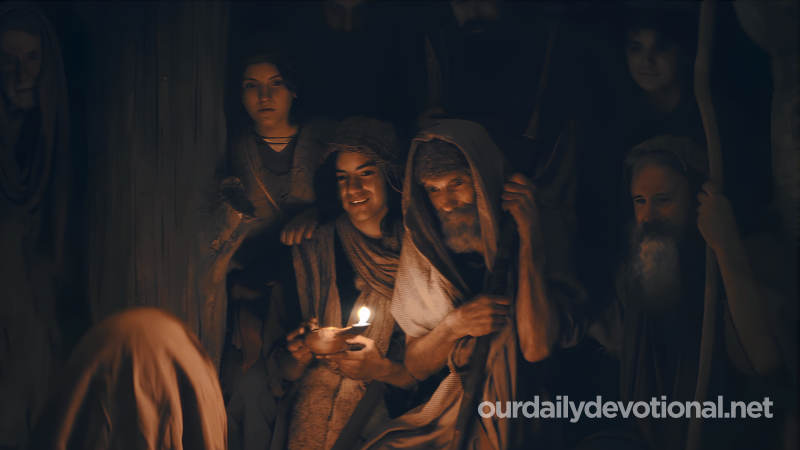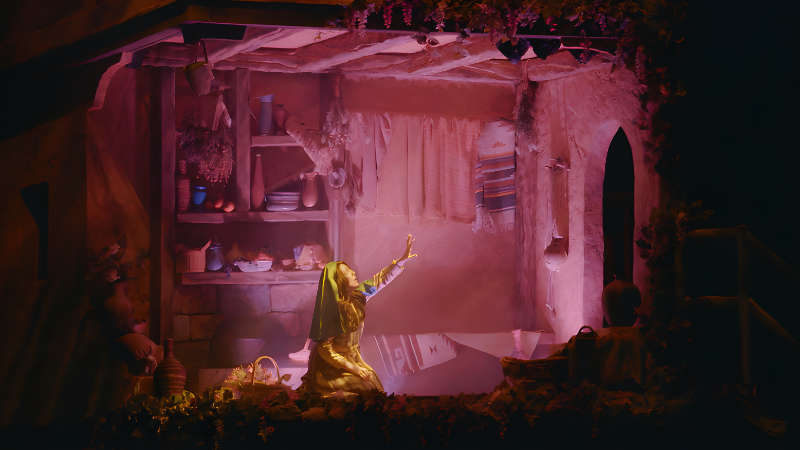(gr. metamorphosis). This term indicates the change that took place in the appearance of Jesus in the vision on the holy mountain.
The Lord, now officially rejected by the authorities of Judaism, headed with his disciples to the extreme north of the country, to the area of Caesarea Philippi (Mt. 16:13).
There, in contrast to Israel's blindness to his person (Mt. 16:13-14), he received Peter's confession that He was the Christ, the Son of the living God (Mt. 16:15). -16).
The Lord then began to announce to his disciples the death that He was going to suffer in Jerusalem at the hands of the Jewish authorities (Mt. 16:21).
It was in the context of this crisis in the Lord's ministry, when He was facing the last stage of His humiliation (cf. Phil. 2:8), that this visible manifestation of the glory of the Lord that was to be publicly manifested in the Lord took place. future (Phil. 2:9).
The Lord, addressing his disciples before the transfiguration, announced that some of them would see "the Son of Man coming in his kingdom" (Mt. 16:28). This promise was soon fulfilled.
Accompanied by Peter, James and John, the Lord went to the mountain to pray. "And while he prayed, the appearance of his face became another, and his garment was white and dazzling" (Lk. 9:29); “He made his face shine like the sun, and his clothes became white as light” (Mt. 17:2).
Peter claims that they saw with their own eyes the majesty of the Lord (2 Pet. 16). Thus it was a brief glimpse of the Lord Jesus clothed with glory, just as he now is on high, and as he will be revealed in his kingdom.
The Law and the prophets were present in this scene, represented by Moses and Elijah; When Peter proposed to make three tabernacles he was silenced by a voice from heaven saying: "This is my beloved Son in whom I am well pleased, listen to him" (Mt. 17:5; Mark 9:7; Luke 9:35).
The event of the transfiguration marks a very important turning point in the Lord's ministry. The topic of the Lord's conversation with Moses and Elijah was "their departure from him, which Jesus was going to accomplish in Jerusalem" (Lk. 9:31).
From then on, the Cross, the fulfillment of his atoning work, was the center of his thoughts: “He set his face to go to Jerusalem (Lk. 9:51).
This was a path undertaken in saving grace: "The Son of Man has not come to lose the souls of men, but to save them" (Lk. 9:56), and with a painful awareness of the rejection that surrounded him (Lk. 9:57-58).
From the mountain of his glorification, the Lord thus descended into the valley of his humiliation, heading towards the Cross. The transformation of the Christian, by the renewal of his understanding (Rom. 12:2), and into the same image of the Lord, by His Spirit, as he beholds by faith the glory of Christ (2 Cor. 3:8), is expressed with the same term as that of the transfiguration of the Lord (cf. 1 Jn. 3:2). Regarding the situation of the Mount of Transfiguration.
Meaning of TRANSFIGURATION
(gr. metamorphosis). This term indicates the change that took place in the appearance of Jesus in the vision on the holy mountain.







